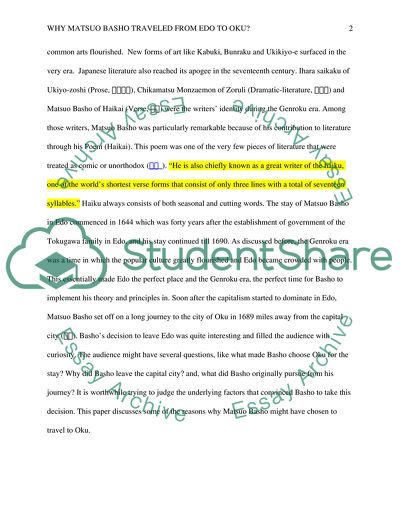Cite this document
(Matsuo Basho's Poem as a Piece of Literature Treated as Comic or Book Report/Review - 1, n.d.)
Matsuo Basho's Poem as a Piece of Literature Treated as Comic or Book Report/Review - 1. Retrieved from https://studentshare.org/literature/1751270-why-matsuo-basho-left-the-capital-city-edo-and-went-to-the-coutry-side-oku
Matsuo Basho's Poem as a Piece of Literature Treated as Comic or Book Report/Review - 1. Retrieved from https://studentshare.org/literature/1751270-why-matsuo-basho-left-the-capital-city-edo-and-went-to-the-coutry-side-oku
(Matsuo Basho'S Poem As a Piece of Literature Treated As Comic or Book Report/Review - 1)
Matsuo Basho'S Poem As a Piece of Literature Treated As Comic or Book Report/Review - 1. https://studentshare.org/literature/1751270-why-matsuo-basho-left-the-capital-city-edo-and-went-to-the-coutry-side-oku.
Matsuo Basho'S Poem As a Piece of Literature Treated As Comic or Book Report/Review - 1. https://studentshare.org/literature/1751270-why-matsuo-basho-left-the-capital-city-edo-and-went-to-the-coutry-side-oku.
“Matsuo Basho'S Poem As a Piece of Literature Treated As Comic or Book Report/Review - 1”. https://studentshare.org/literature/1751270-why-matsuo-basho-left-the-capital-city-edo-and-went-to-the-coutry-side-oku.


